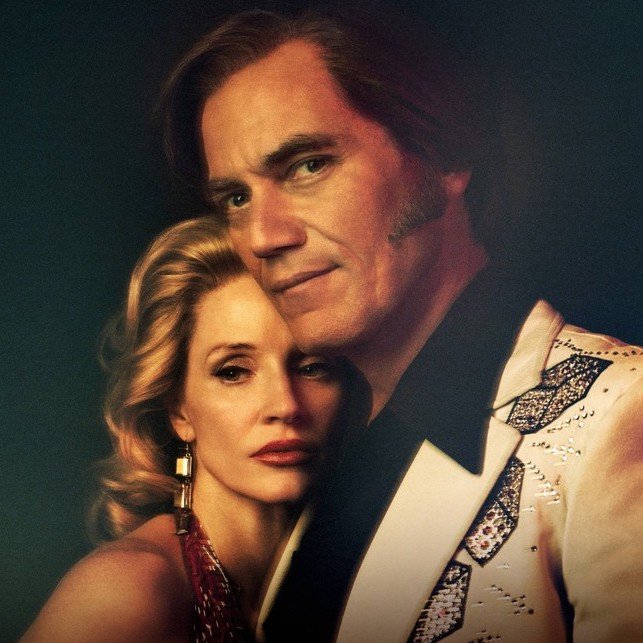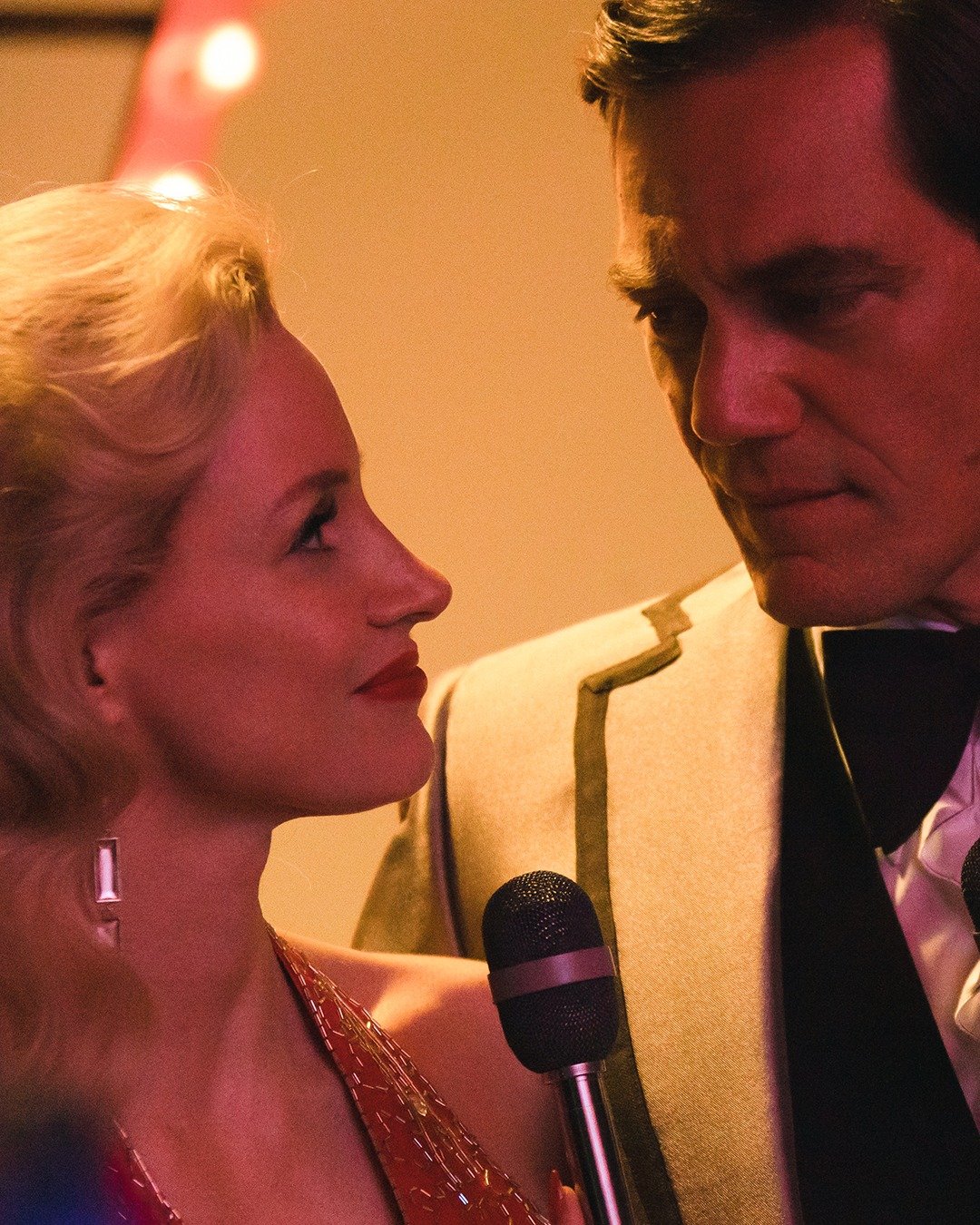George & Tammy: Ace Six-Part Biopic a Success Worthy of its Subjects
If there’s a flaw in George & Tammy, the six-part miniseries chronicling the infamously fraught yet steamy relationship between late country music icons and on-again, off-again paramours George Jones and Tammy Wynette, it’s that it ends. Despite nearly six hours in the pair’s electrifying company, at series close we still want more. It’s really that good.
That outcome is entirely the result of leads Jessica Chastain and Michael Shannon. The pair so fully capture Jones and Wynette in spirit and in sound — providing their own vocals after months of rehearsals with a vocal coach, and with top producer T Bone Burnett sprinkling sonic pixie dust — that it feels like seeing the real deal, even if Chastain and Shannon are, to be blunt, vastly more attractive than their real-world counterparts.
Flies on walls never had it so good.
The series — which recently wrapped on Showtime and Crave — begins in 1968 with crooner Jones, already a star and a notorious drunk, obstinately camping out in a bathroom stall, refusing to go on-stage. When lackeys finally liberate him by removing the stall door, they note that “George is having a standing problem” before taping up his knees to keep them from bending, then shepherding him before an eager throng.
That kind of gallows humour is in abundance in the series, which is based on the book The Three of Us: Growing Up with Tammy and George by Georgette Jones, Jones and Wynette’s only child together and depicted throughout the series as a foil to the shenanigans of Jones, whose alcoholism and drug use — the latter eventually matched by Wynette — serves as the grease slicking both his songwriting themes and the narrative tension throughout.
There are many, many memorable scenes in George & Tammy, and readers of Jones’ outrageous 1996 autobiography I Lived to Tell It All will delight in the film’s authenticity. Yes, the driving-the-lawnmower-to-the-liquor-store bit appears intact and there is never any attempt to whitewash his nasty deportment towards both family and colleagues.
There is however, a curious absence of other country stars from the era who were doubtless in the couple’s orbit. Perhaps this is a device to keep the story locked on Jones and Wynette, or maybe to convey the claustrophobic aspect of their fame and partnership. Whatever, those seeking protracted cameos from actors portraying Waylon Jennings and Johnny Cash will be disappointed.
Still, the series never loses sight of why we continue to care about these two long after their deaths in 1998 (Wynette, sadly, at age 55) and 2013 (Jones, miraculously, at age 81): the music. In particular, the music they made together in a series of duets anchored by universal themes that seemed ultra-relatable coming from a real-life couple mired in the throes of love, anger, addiction, acrimony, and the merciless Nashville hit-making machine.
The premiere and penultimate episodes are especially riveting. After episode one “The Race Is On” launches with the before mentioned drunken Jones being herded on stage, we soon meet Wynette, an aspiring country singer cranking out middling tunes with her lesser songwriting partner-husband Don and his daughter Donna.
Idolizing Jones, the fast-rising Wynette is thrilled at the prospect of potentially touring with him, though it’s clear their physical attraction might be a problem for a married woman if she hopes to remain that way. A fabulous sequence of scenes — Jones keenly watching Wynette rehearse during soundcheck, Wynette, the onetime hairdresser, crafting Jones’ trademark locks in a bathroom as her husband Don eavesdrops — lead to a fiery climax.
A sober Jones comes to dine with Tammy and a drunken Don at their home. Things quickly devolve into name-calling, accusations and eventually, fisticuffs. Something’s gotta give. A triumphant George, surveying Tammy and Don’s extended brood, drawls “Remind me which ones are yours?” before bundling Tammy and her trio of daughters into his car and screeching off into the night. Talk about a rocket-launcher start to a love affair... and a tinderbox setting for a vicious divorce which plays out over subsequent episodes.
By episode five, “Two Story House” — each episode titled after a hit from their combined canon — George and Tammy have reached the highest highs and the lowest lows as a couple. They are now apart. But another nightmare is just beginning for Tammy.
A lifetime of illness and pain has led her to painkillers, enthusiastically administered by conniving new beau George Richey (Steve Zahn), a long-standing and trusted associate to the couple with an extensive if hidden portfolio of bad behaviour and evil intent.
Two harrowing scenes, one of Richey’s fragile wife Sheila learning of (and uncomfortably anointing) his affair with Tammy, and another of her domestic abuse, tee up the ghastly eventual Wynette-Richey nuptials, during which a drugged-out Tammy, backwards-facing cigarette poking from her lips, gives a bleak and muddled performance as her horrified daughters look on. (Those daughters would eventually name Richey in a suit filed against her doctor, claiming both had abetted Wynette’s addiction and obfuscated the true cause of her death).
In each of the series’ six episodes, director John Hillcoat draws stellar performances from his entire cast, and the authenticity factor is notably boosted by well-observed period details: of-the-moment makeup and hairstyles, avocado-coloured appliances, wood paneling. All of it combines to make George & Tammy immersive, unvarnished yet wholly sympathetic. And did we mention really good?
Even those ambivalent to their music will be absorbed in this sweeping drama.




There’s no shortage of truly hysterical stories throughout this special.